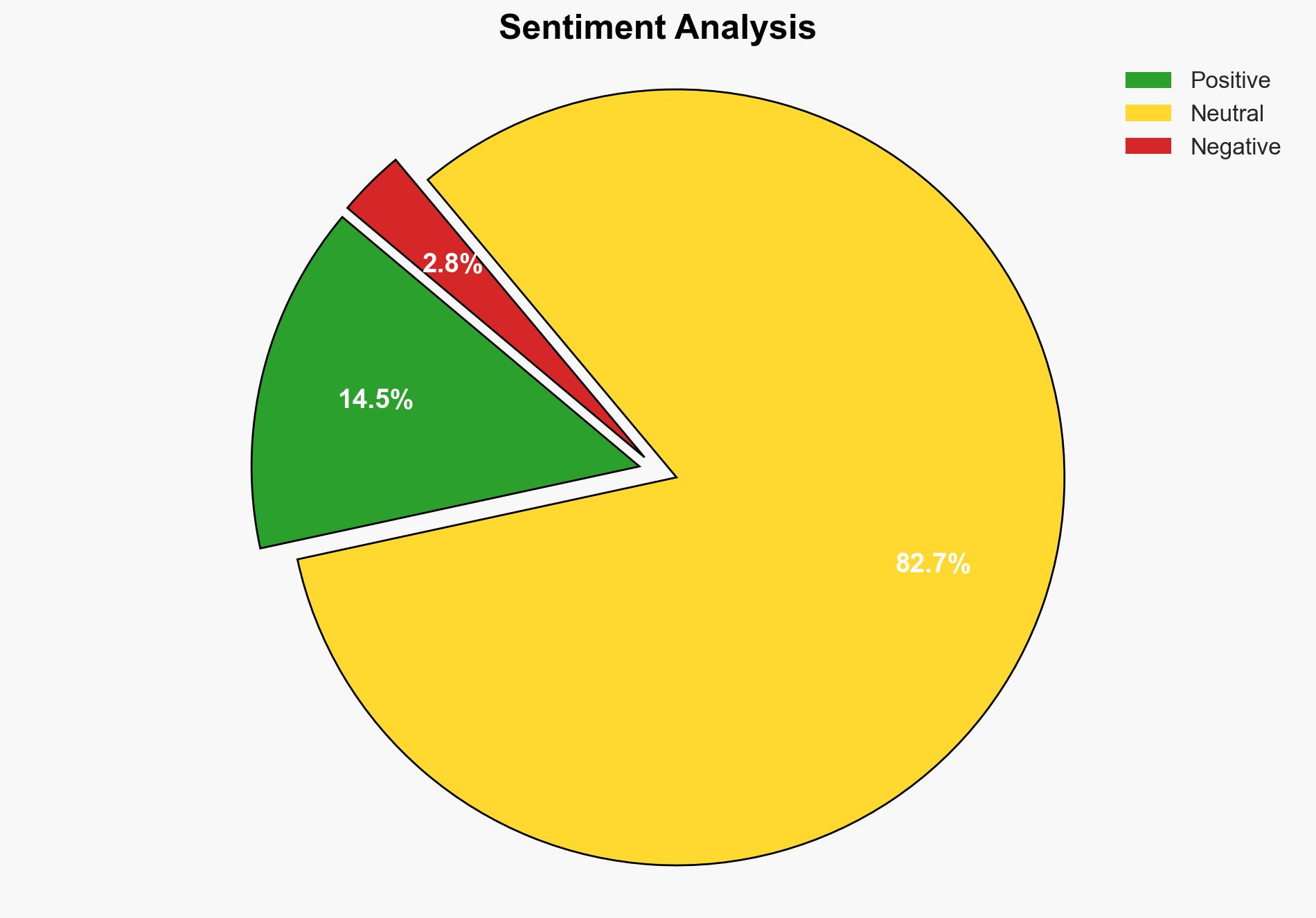Whats on the agenda as Saudi Arabias MBS meets Trump in the US – Al Jazeera English
Published on: 2025-11-18
AI-powered OSINT brief from verified open sources. Automated NLP signal extraction with human verification. See our Methodology and Why WorldWideWatchers.
Intelligence Report:
1. BLUF (Bottom Line Up Front)
With a medium confidence level, the most supported hypothesis is that the meeting between Saudi Arabia’s Crown Prince Mohammed bin Salman (MBS) and former President Donald Trump aims primarily to strengthen bilateral security and economic ties, with a secondary objective of exploring Saudi Arabia’s potential participation in the Abraham Accords. Strategic recommendations include monitoring the outcomes of the meeting for shifts in regional alliances and preparing for potential geopolitical impacts on U.S. interests in the Middle East.
2. Competing Hypotheses
Hypothesis 1: The primary goal of the MBS-Trump meeting is to solidify U.S.-Saudi security and economic relations, focusing on arms deals and investments.
Hypothesis 2: The meeting’s main objective is to facilitate Saudi Arabia’s entry into the Abraham Accords, thereby normalizing relations with Israel and reshaping regional dynamics.
Hypothesis 1 is more likely due to the historical context of U.S.-Saudi relations centered around security and economic cooperation, as well as the immediate announcement of a fighter jet sale. Hypothesis 2, while plausible, faces significant obstacles, such as Saudi Arabia’s stance on Palestinian statehood.
3. Key Assumptions and Red Flags
Assumptions: The U.S. and Saudi Arabia share mutual interests in countering regional threats and enhancing economic ties. Saudi Arabia’s participation in the Abraham Accords is contingent upon progress in the Israeli-Palestinian conflict.
Red Flags: Potential overestimation of Saudi willingness to join the Abraham Accords without significant concessions on Palestinian statehood. The possibility of using the meeting for domestic political gains by both parties.
4. Implications and Strategic Risks
The strengthening of U.S.-Saudi ties could lead to increased regional tensions, particularly with Iran. A successful arms deal may provoke criticism from human rights organizations and complicate U.S. relations with other Middle Eastern allies. If Saudi Arabia joins the Abraham Accords, it could alter power dynamics in the region, potentially leading to escalated conflicts or alliances.
5. Recommendations and Outlook
- Monitor the outcomes of the meeting for any formal agreements or shifts in policy, particularly regarding arms sales and regional alliances.
- Engage with regional partners to assess the impact of potential Saudi participation in the Abraham Accords.
- Best-case scenario: Strengthened U.S.-Saudi relations lead to enhanced regional stability and economic growth.
- Worst-case scenario: Increased regional tensions and backlash from human rights groups over arms deals.
- Most-likely scenario: Incremental progress in U.S.-Saudi relations with limited immediate impact on broader regional dynamics.
6. Key Individuals and Entities
Mohammed bin Salman (MBS), Donald Trump, U.S. Congress members, American business leaders.
7. Thematic Tags
Structured Analytic Techniques Applied
- Cognitive Bias Stress Test: Expose and correct potential biases in assessments through red-teaming and structured challenge.
- Bayesian Scenario Modeling: Use probabilistic forecasting for conflict trajectories or escalation likelihood.
- Network Influence Mapping: Map relationships between state and non-state actors for impact estimation.
- Narrative Pattern Analysis: Deconstruct and track propaganda or influence narratives.
Explore more:
National Security Threats Briefs ·
Daily Summary ·
Support us





